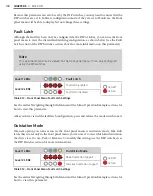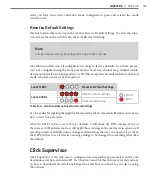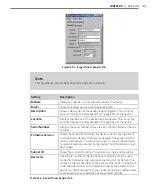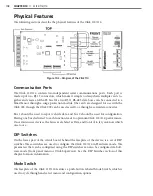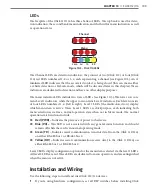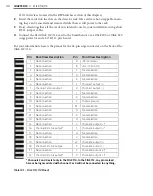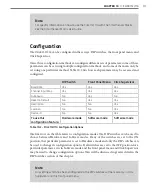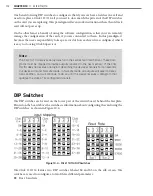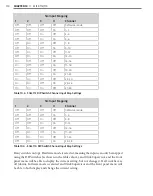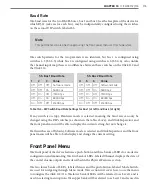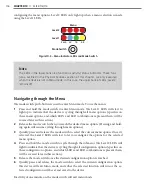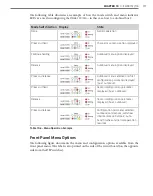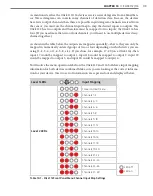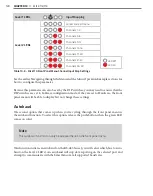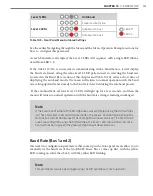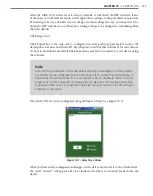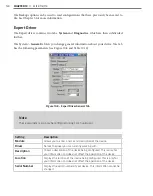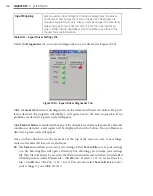
112
CHAPTER 10
•
CLICK 112/114
One benefit of using DIP switches to configure is that if you ever have a field service call and
need to replace a Click 112/114, all you need to do is match the pattern of the DIP switches
on the card you are replacing. This paradigm will even work in situations where the old rack
card will not power up.
On the other hand, a benefit of using the software configuration is that you can remotely
manage the configuration of the cards, if you are connected to them. In this paradigm, it
becomes the user’s responsibility to keep a record of how each card was configured, which
is easy to do using Click Supervisor.
Note
The Click 112/114 receives datagrams from the connected SmartSensor. These data-
grams must be mapped to device outputs (covered in the next section). If the Click
112/114 does not receive a datagram describing the device’s channels for ten seconds,
the device will enter fail-safe mode. In fail-safe mode, all outputs will assert a detec-
tion condition, and will continue to do so until the device receives a datagram that
updates the state of its configured channels.
DIP Switches
The DIP switches are located on the lower part of the circuit board, behind the faceplate.
Printed on the board above the switches is information about configuring the card using the
DIP switches, as shown in Figure 10.4.
Figure 10.4 – Click 112/114 DIP Switches
The Click 112/114 feature two DIP switches labeled S4 and S5 on the silk screen. The
switches are used to configure a total of three different parameters:
˽
Bus 1 baud rate
Summary of Contents for Click 100
Page 1: ...Click 100 400 Series USER GUIDE...
Page 11: ......
Page 17: ......
Page 27: ......
Page 41: ......
Page 43: ......
Page 79: ......
Page 129: ......
Page 145: ......
Page 161: ......
Page 175: ......
Page 183: ......
Page 187: ......
Page 207: ......
Page 219: ......
Page 225: ......
Page 245: ......
Page 259: ......
Page 260: ...www wavetronix com...



